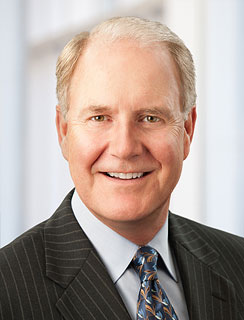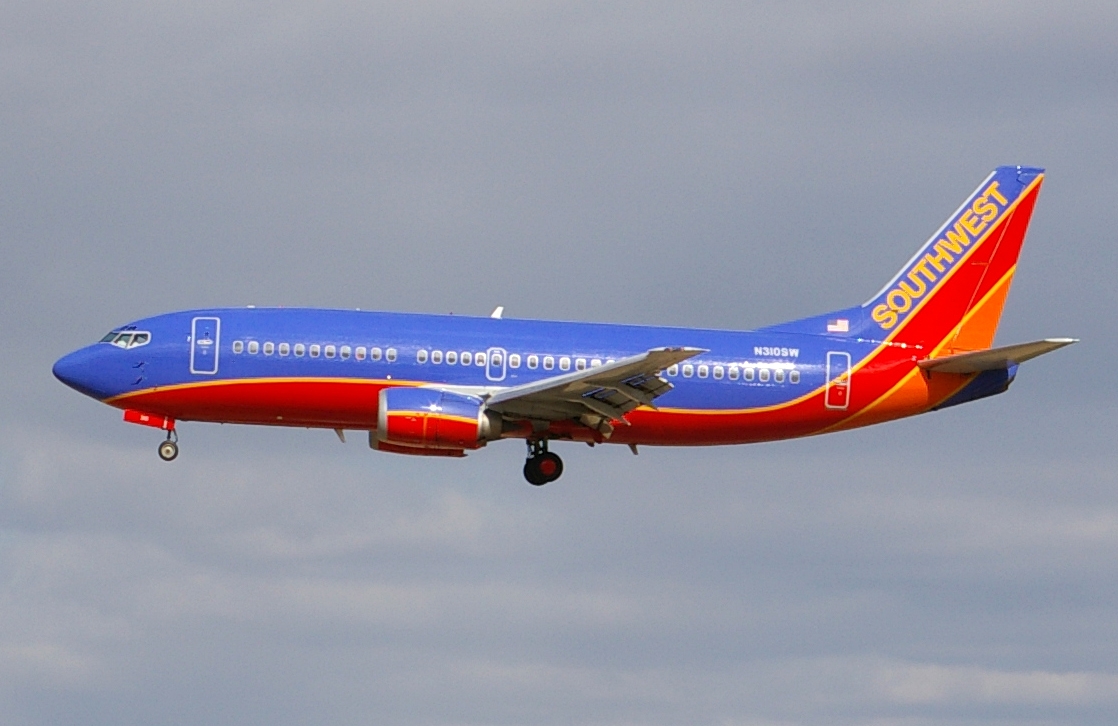Nearly 20 years into his tenure as CEO, Southwest Airlines leader Gary Kelly took to the stage at Love Field’s Frontiers of Flight Museum to reflect—both on the past and the future of Southwest and the larger aviation and travel industries—for the annual Aviation Breakfast hosted by the North Dallas Chamber of Commerce.

Kelly, who has led Southwest since 2004, plans to retire in 2022. His leadership style has been marked by his challenge to the Wright Amendment in 2004, his expansion of the airline into international routes, acquisitions, and more. He guided the Southwest crew through the pandemic and now hopes to leave the company in the safe hands of his successor, Robert Jordan, who currently serves as executive vice president of corporate affairs at Southwest.
Here are some key takeaways and industry forecasts Kelly shared during his talk this morning with Scott McCartney, who created the airlines and travel column, ‘Middle Seat,’ for The Wall Street Journal.
Responses have been edited for brevity and clarity.
1. The pandemic hit hard, particularly for business travel, but leisure travel is on the rise.
KELLY: “When we go back to the end of March, early April of 2020, at that point in time, our revenue had dropped about 98 percent. We were flying airplanes around, literally with no customers on them. So it was a very scary time, and of course, that has translated in pretty massive losses …
“When we got into the fall last year, by then, travel had picked up a little bit. We were probably down about 50 percent year-to-year, which is a lot better than being 2 percent of the year before, but nonetheless very far away from profitability.
“The good news is the travel demand is really good. [There are] two basic segments: business travelers and leisure travelers. There’s a different story for each. Business travelers is not close to being recovered. But, the consumer wants to travel and is traveling in great numbers. Numbers sufficient [enough] that we’ve got a business. Even now, we’ve been trying to get our supply and labor issues balanced out. I think that it’s true [that the worst is behind us], but that doesn’t mean that there are challenges remaining.”
2. And, its impact on the workforce and business travel may have lasting effects.
KELLY: “Flexibility is a keyword. Competition for talent is much more intense than it was in 2019, for all the reasons that we all know. And business travel, which impacts us very directly, is unpredictable.
“I’ve been more the bear on [business travel outlooks] than some of my colleagues have been. I just don’t know, but business travel was still down 65 or 70 percent compared to where it was. I think that there are encouraging signs about it improving. Maybe it will settle at down 20 percent compared to where it was, but a normal recession for us would have business travel taking about five years to recover before it starts expanding again. This is not a normal recession at all. We’re beyond that, but it’s impacted travel. So, it’s anybody’s guess how this ends up, but that alone has an impact on the way that we think about planning and managing going forward.”
3. Staffing challenges and falling behind schedule are behind recent operations issues industry-wide.
KELLY: “Long story short, typical staffing models that have worked for us for 49 years, did not work this summer. We’ve adjusted our flight schedule accordingly to better balance the resources that we’re able to put to work compared to the effort that it takes to produce flights. And it wasn’t unique to Southwest: every single airline that was having the same kind of struggles….
“So, October 8 was as simple as what you witnessed this past week with one of our competitors. Once an airline gets behind, it takes several days to get airplanes and people back where they’re supposed to be. And no airline has the luxury right now of having a staffing margin, which exacerbates the problem.
“For us, it was a staffing issue with the air traffic control center in Jacksonville, Florida, that the FAA said [it had] limited staffing on Friday with severe weather. Every Florida location that we serve was shut down for some period of the day on that Friday, including Orlando, which I believe was shut down for seven hours—no arrivals departures. We’re probably the largest airline in Florida, but what it translated to for us is we had 180 airplanes that were flown through Florida that Friday afternoon, and they were out of position, and, ultimately, they needed to be in 66 different places with our point-to-point route system. It impacted us a lot more than our competition. Whether we managed our way through that perfectly, it’s always hard to tell.”
4. The 18 cities Southwest added during the pandemic are projected to pay off.
KELLY: “We are aggressive, and we want to play offense, and we are going to be opportunistic here, and Southwest will do very well. The addition of the 18 cities will stay. They’re all performing either in line with what we would expect in an environment like this or better. There’s a leisure orientation to 15 of the 18 additional cities…They were cities that emerged as opportunities simply because we had half a fleet that was idle—hundreds of airplanes with nothing to do. So, it was really genius. I can’t take credit for it…We earned new customers. We put their airplanes to work. It mitigated cash losses by doing that, and we’re positioned very well.
“These are cities that, had we have not had the pandemic, I don’t know if we would have ever gotten there because we had so many demands to add flights here in Texas and in California. We’re growing like crazy in Denver or Nashville. There’s just a number of needs we had all over the country before the pandemic, and it crowded out all these opportunities. I think it added up to 70-ish airplanes worth of flying. So, we don’t want to unravel that now. In 2022, we think we’re going to see a pretty nice recovery in business travel, and we’ll need to boost the flight activity in places like Dallas to Houston to keep up with that.”
5. The company will make a move to gain share in corporate group travel.
KELLY: “One of the things that we have not done in the past is we haven’t made it easy for the big corporate travel managers to do business with Southwest Airlines. These are called global distribution systems. Dave Harvey is our vice president of Southwest business and led the effort to reduce the barriers. Now, he’s got boots on the ground, a great sales force, and they’re going out getting big accounts because now we made it easy for them to book your travel on Southwest, do corporate deals, monitor their employees’ travel—all the tools that come with these global distribution systems. You might say, ‘Why has it taken you so long to do that?’ Well, we kind of didn’t need it. But what we know we miss is…overall in the United States, our share of traffic is in the 20 to 25 percent range, year in and year out. And our share of the big corporate managed travel accounts is not remotely close to that. So that’s where our opportunity is.”
6. Innovation will continue, but air traffic control needs to keep up.
KELLY: “[Travel] is not remotely the same. I think for the better. Planes are definitely more full…Our average annual load when I started in 1986 was 58 percent. Now, we transpose the numbers. It’s what it should be, aside from the pandemic, at 85 percent. Through scheduling and revenue management techniques, we can generate higher load factors that keep getting more revenue per departure, and that way, it keeps the average error lower. So, it’s all good in that sense. But the ease that you can make a booking, get your boarding pass….make your seat selection, is dramatically better than it was back in the 1980s, even as late as 2001. It’s fascinating, and I think that will continue to improve.
“The air traffic control system is not keeping pace. That’s a longtime complaint that I and my colleagues in the industry have. One disappointment that I have is that, and I’ll just take Dallas Houston as an example, the itinerary time, is much longer today than it was in 1986, and that’s wrong—It should be faster, not slower. There’s definitely opportunities there.
“We have a commitment as an industry to be carbon neutral in 2050, and that can be done. It’s very audacious. It’s very ambitious. But just the fact that it’s possible, I think, is very exciting. This air traffic control system management is a huge component of that. We think that you can reduce greenhouse gas emissions from aviation in the US by 10 to 15 percent just with better air traffic control management. It’s an ecosystem with airports, the government, and airlines, working together on that.”






